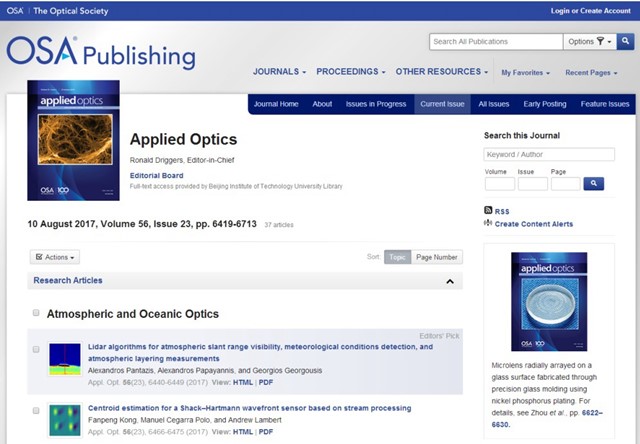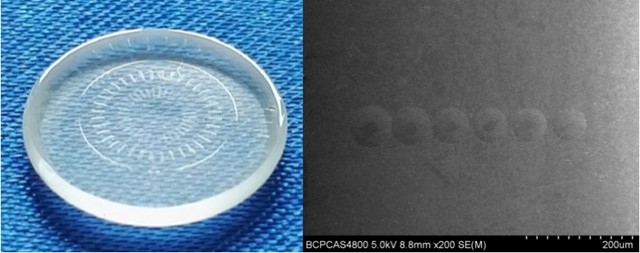Contributed by: School of Mechanical Engineering; Editor: E'Mei
On August 8th, 2017, the paper "Interface Thermal Resistance Study on the Evolution of Precision Molding Surface Morphology of Glass Microlens Arrays" written by Professor Zhou Tianfeng of the School of Mechanical Engineering, Beijing Institute of Technology was published on the cover of Applied Optics .

The glass microlens array is a glass optical element composed of a lens array having a characteristic unit size of several hundred nanometers to several tens of micrometers, with a large number of micro/nano cells per unit area, and special geometrical and optical characteristics. It is the main development direction of the next-generation optical system.
The glass micro-lens molding manufacturing refers to applying a certain pressure at a high temperature to replicate the shape of the micro-lens on the surface of the mold to a glass surface heated and softened, and then cooling and solidifying by annealing to form a micro-lens array on the surface of the optical glass material. Compared with conventional micro-cutting, MEMS etching and other processing technologies, this method has the characteristics of high forming accuracy, high efficiency, good consistency, and low processing costs. It is suitable for mass production and is considered to be one of the most effective methods for the manufacture of optical microlens arrays, having a high research and application value. The figure shows the main flow of micro lens array molding.

(a) Heat insulation (b) High temperature pressurization (c) Depressurized annealing (d) Cooling and demoulding
The research team analyzed the interface heat transfer during the formation of precision molded glass microlens arrays, established a calculation model for the glass-die interface thermal resistance, and conducted numerical analysis, an important part of the precision of the forming process in the heating stage of glass precision molding. The evolution theory of flattening effect on the forming surface roughness in the forming process was proposed, and the influence law of heating time on the surface roughness of the formed glass lens was studied experimentally, and the cause of the interface adhesion phenomenon was analyzed.

Effect of flattening effect on surface roughness of shaped glass devices
The research team prepared a nickel-phosphorus (Ni-P) coating on the surface of a heat-resistant stainless steel substrate, and applied this method to prepare a mold for molding by using an ultra-precision diamond milling technique to process a microlens array on the surface of the coating. An array of optical glass microlenses were made by low-melting optical glass compression moulding with two roughnesses.

Glass microlens array devices by molding
(Reviewed by: Zuo Zhengxing)